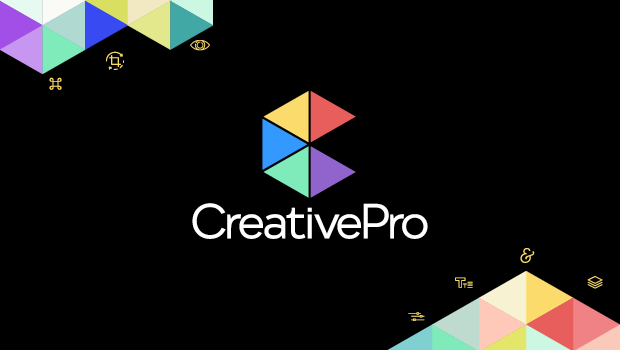Illustrator Q and A's

In Pursuit of Snappyness
Q: A lot of times I create guides and drag over boxes or whatever to fit to them. It looks good from 100% or so, then when I zoom in closer I see that they are actually not right up to the guide but off by a small amount. It seems that Illustrator never gets them perfect unless you’re zoomed in a lot.
— Jacob Brunny
A: SIGH. This has been a personal frustration of mine for many, many, many years. I touched on this issue in my blog, but the upshot is that Illustrator doesn’t snap object geometry. Rather, Illustrator CS2 and earlier versions snap cursor position. (Illustrator CS3 provides some new behavior in this area; look for my review on creativepro.com in mid-April.)
Go ahead and try it. Draw a guide. Then draw a rectangle and fill it with a color. The click anywhere in the fill area of the rectangle (not on the path), and drag it towards the guide. The edge of the rectangle will not snap to the guide. Keep dragging until your cursor touches the guide — and you’ll see that the cursor itself does snap to the guide.
So where you click on an object makes a difference in how that object snaps. If you click on an anchor, it appears that anchor snaps to another anchor when you drag it, but remember that it’s the cursor position, not the anchor. Since when you zoom in really close, it’s easier to mouse down on the anchor or the area you’re looking to snap, it appears as though Illustrator is more accurate when you’re zoomed in that close.
In InDesign, object boundaries DO snap to guides. You can grab a picture frame anywhere and drag it — and you’ll see the boundary of the frame snap to guides.
Because a typical Illustrator document contains many more objects than an InDesign document, you might think that having objects snap in Illustrator might not be wanted. But at the same time, I’m not happy with the current implementation either. So instead, we struggle with this every day.
To Anti-Alias or not to Anti-Alias? That Is the (Blurry) Question…
Q: I have an Illustrator file with an image with a brown rectangle for the background, a lake on top of that, and then some text. I would like the rectangle to have anti-aliasing turned off and keep anti-aliasing turned on for the text. The issue is, when I post the rectangle up on a Web site with a brown background, the rectangle’s border has some anti-aliasing to it, creating a white border around the image.
I understand I can turn off anti-aliasing for the entire document by unchecking Anti-Aliased Artwork in general preferences, but this also turns it off for the text.
Is it possible to turn anti-aliasing off for the rectangle only? Right now my only solution is to copy the image to Photoshop and crop the image inside the border. (I tried creating a clipping mask in Illustrator, but the anti-aliased border moves to wherever the clipping mask is.)
— From the Illustrator World forums
A: First, the anti-aliased artwork setting in Preferences applies only to how Illustrator displays graphic on your artboard in Preview mode. It doesn’t effect how graphics are exported in Save for Web (or any other method). Theoretically, you could disable anti-aliasing and take a screenshot of your artboard in Illustrator and then open the screenshot in Photoshop… but that would only be a useful method when you’re being paid by the hour.
Second, there is indeed a way to turn off anti-aliasing on a per-object basis. Select your object and choose Effect> Rasterize. In the Rasterize dialog box (Figure 1), set anti-aliasing to None. Since the effect is a live effect, the object is still completely editable as vector art, yet it appears as though it has been rasterized without anti-aliasing. And it will export just as you see it on your screen. Of course, you’ll want to always use Pixel Preview mode when working with Web graphics.

Figure 1.
This tip is also especially useful when you DON’T want text to be anti-aliased. At small point sizes, and with certain typefaces, anti-aliased text is too blurry to read. Rather than have text that no one can read, turning off anti-aliasing for such type objects will result in text that remains editable in Illustrator (due to the live effect), but that is legible when viewed on the Web.
This article was last modified on December 14, 2022
This article was first published on March 26, 2007




